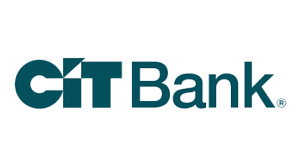A budget is often the ticket to taking control of your personal finances and making sure you can accomplish your financial goals. But despite the importance of having a budget, many people aren't sure where to start when it comes to creating one.
How to set up a budget
These five simple steps will guide you through the process so you can end up with a budget that you can live on -- one that will help you accomplish big things.
1. Track your spending
The very first step in making a budget is to track your spending for 30 days. It may seem odd to take such a close look at your current spending since you're probably making a budget in order to use your money more wisely.
The reality, however, is that you need to have some idea of where you are starting from if you want to set yourself up for success. If you're currently spending $800 a month on groceries or $500 per month on entertainment, it might be really hard to stick to your budget if you limit yourself to $200 for food shopping and $50 for fun activities.
By tracking your spending, you can get a realistic idea of where your money is going and what types of reasonable changes you can make and sustain over the long-term.
If you primarily use credit cards, you can link your card to an app that does the tracking for you. But you may also want to manually track your spending by writing down all purchases to make sure nothing slips through the cracks and all your spending is categorized properly.
High-yield savings account comparison
We recommend comparing high-yield savings account options to ensure the account you're selecting is the best fit for you. To make your search easier, here's a short list of standout accounts.
2. Decide on a budgeting method
Next, you'll need to decide on a budgeting method. There are a few different approaches you could take, including:
Zero-based budgeting
With this approach, every single dollar of your income will be assigned a job. You'll have different spending and saving categories and will allocate a certain amount of money to each one. All of the spending and saving categories will add up to exactly your monthly income.
50/30/20 budgeting
This approach works very differently and is more relaxed. It requires you to save 20% of your income, allocate 50% to your basic needs, and reserve 30% for fun spending. You'll have more flexibility with this approach, but it can be harder to see whether you're really using every dollar as wisely as possible.
Envelope-based budgeting
With this approach, you'll set spending limits for different categories and will keep that amount of cash in an envelope. Each time you make a specific purchase, you'll take money from the relevant envelope. Once it's gone, you can't spend any more on that category until the next month. This kind of budgeting can be a good option for people who have trouble sticking to spending limits.
3. Pick your app or spreadsheet
Next, you'll need to decide if you're going to use a budgeting app or a spreadsheet. Apps can make the process simpler but may not be as effective since they remove some of the manual work that really forces you to think about your spending.
Spreadsheets are more cumbersome, but you can also make them more personalized. And because budgeting is more hands-on, you'll have to be more conscious of the choices you make and may feel a broader sense of control over your spending.
4. Get your family on board
If you aren't the only person in your household who spends money, you'll need to get your family members on board with your budget. After all, you don't want to end up exceeding your spending limits because your partner spends too much money.
If you have older kids, you may also want to involve them because chances are good you spend a lot on their needs. Giving them some input into where your "kid" money goes could help avoid requests for items you can't afford -- and could show them the importance of creating their own budgets as they get older.
5. Sit down and make your budget
Now it's time to make your budget.
This step will depend on your approach. If you're using a zero-based budget, then you'll divide all of your money into specific categories of spending. If you're using a 50/30/20 budget, then you'll group all your fixed expenses under the 50% category. And if you're using an envelope budget, you'll have to put money into each of your spending envelopes.
You should be aware that this isn't a one-time event. Your budget could change as often as once a month as different expenses arise that you need to plan for. So set aside some time to regularly review your current spending plan and make any necessary adjustments.
Bottom line
By following these five steps, you should be able to create a budget that really works -- and that opens the door to managing your money wisely. It's well worth the effort.
Our Personal Finance Expert
We're firm believers in the Golden Rule, which is why editorial opinions are ours alone and have not been previously reviewed, approved, or endorsed by included advertisers. The Ascent, a Motley Fool service, does not cover all offers on the market. The Ascent has a dedicated team of editors and analysts focused on personal finance, and they follow the same set of publishing standards and editorial integrity while maintaining professional separation from the analysts and editors on other Motley Fool brands.


